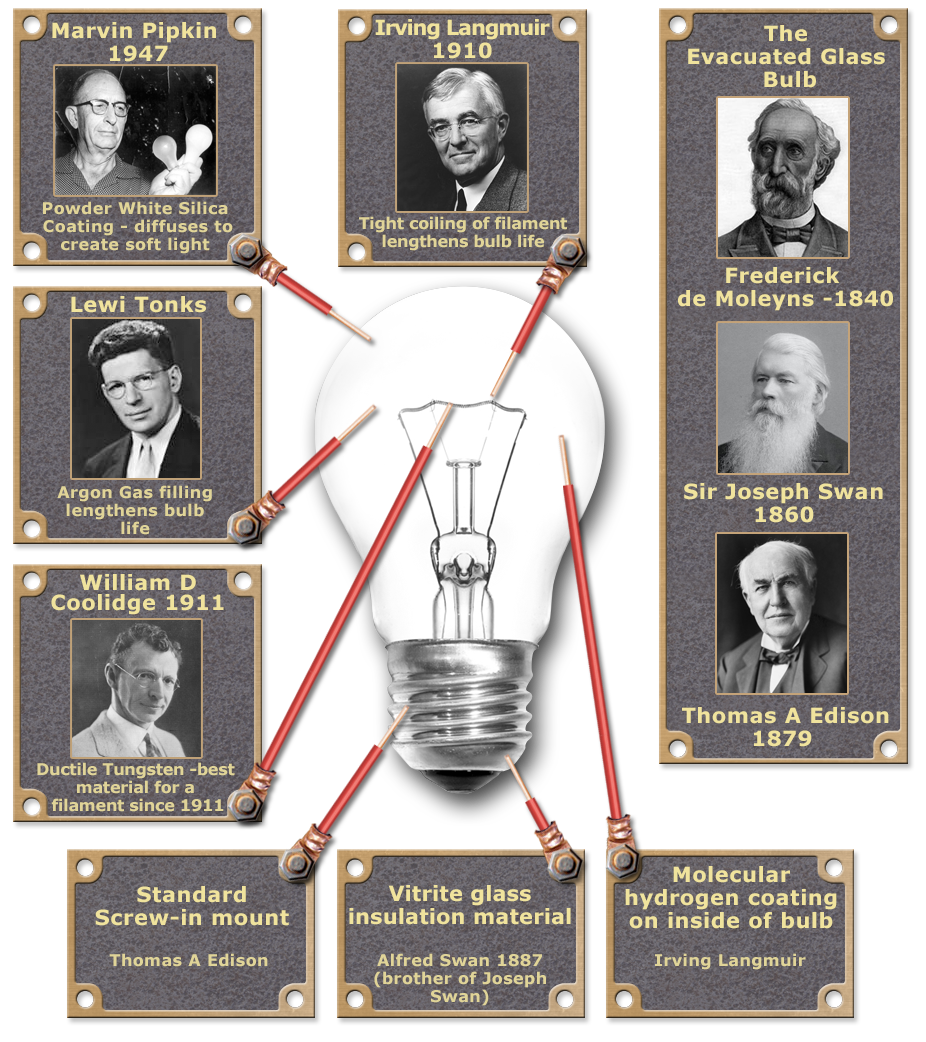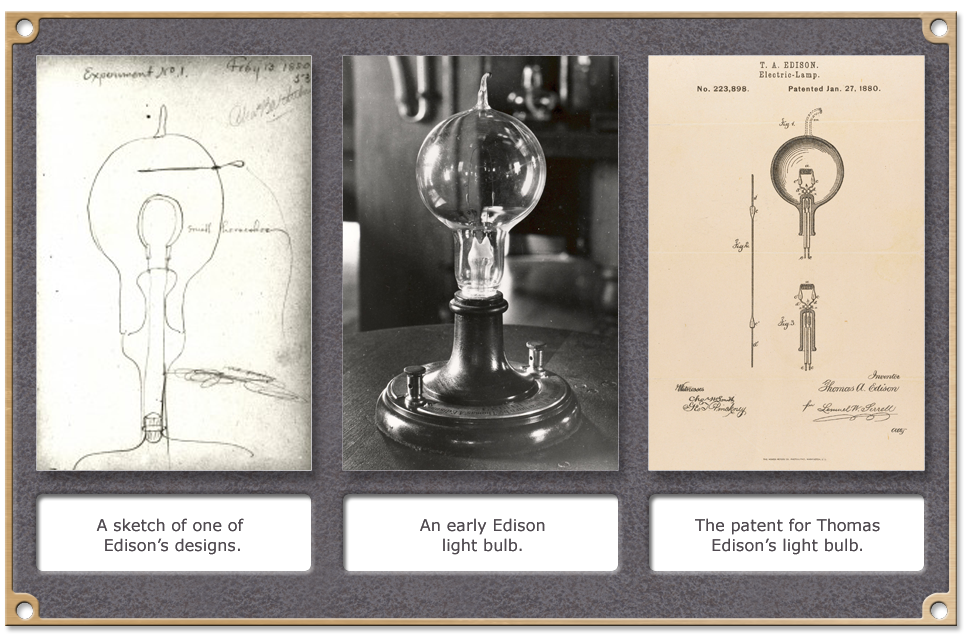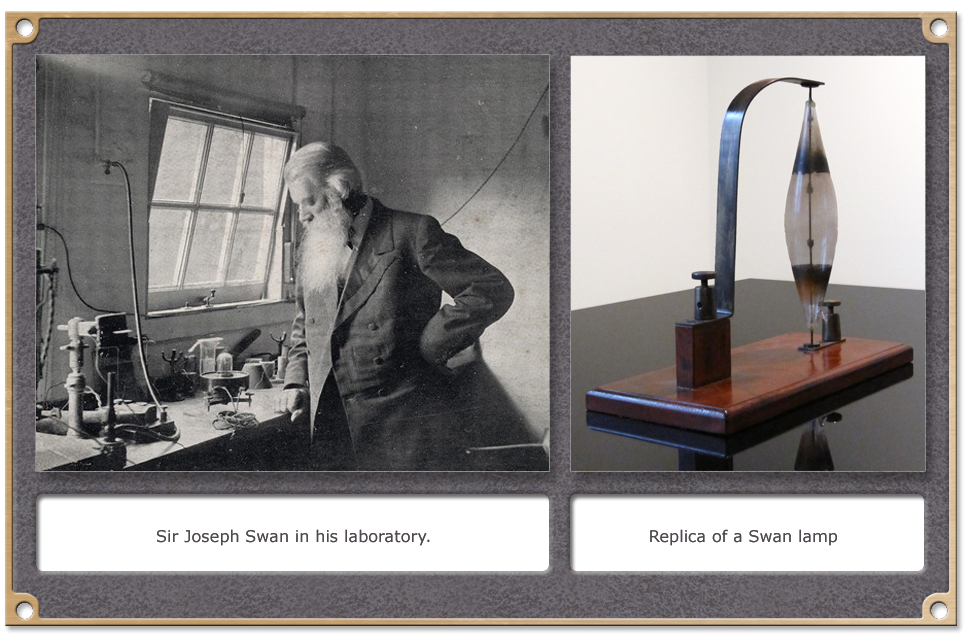History
More than 150 years ago, inventors began working on a bright idea that would have a dramatic impact on how we use energy in our homes and offices. This invention changed the way we design buildings, increased the length of the average workday and jumpstarted new businesses. It also led to new energy breakthroughs from power plants and electric transmission lines to home appliances and electric motors.Like all great inventions, the light bulb can’t be credited to one inventor. It was a series of small improvements on the ideas of previous inventors that have led to the light bulbs we use in our homes today.
Light bulb history timeline
Inventors of the modern incandescent lamp
 |
Frederick de Moleyns |  |
William D Coolidge |
 |
Sir Joseph Swan |  |
Lewi Tonks |
 |
Thomas A Edison |  |
Marvin Pipkin |
 |
Irving Langmuir |

Inventor profiles
An American chemist and inventor of two processes for inside frosting of incandescent lamp bulbs. Born near Lakeland, Florida, Pipkin attended Alabama Polytechnic Institute and received a Batchelor of Science degree in Chemical Engineering in 1913 and a Master's in 1915. In 1917 Pipkin enlisted in the US Army and was assigned work on gas masks. His wartime work was at the General Electric Nela Park laboratory in Cleveland where he remained after the war. In 1925 Pipkin developed a process for etching the inside of a lamp bulb with acid, using a two-step process so that the lamp would not be excessively weakened. In 1947 a silica coating process also invented by Pipkin replaced the etching.
An American chemist and physicist. His most noted publication was the famous 1919 article "The Arrangement of Electrons in Atoms and Molecules" in which, building on Gilbert N. Lewis's cubical atom theory and Walther Kossel's chemical bonding theory, he outlined his "concentric theory of atomic structure".[3] Langmuir became embroiled in a priority dispute with Lewis over this work; Langmuir's presentation skills were largely responsible for the popularization of the theory, although the credit for the theory itself belongs mostly to Lewis. While at General Electric from 1909–1950, Langmuir advanced several basic fields of physics and chemistry, invented the gas-filled incandescent lamp, the hydrogen welding technique, and was awarded the 1932 Nobel Prize in Chemistry for his work in surface chemistry. The Langmuir Laboratory for Atmospheric Research near Socorro, New Mexico, was named in his honor as was the American Chemical Society journal for Surface Science, called Langmuir. His initial contributions to science came from his study of light bulbs (a continuation of his Ph.D. work). His first major development was the improvement of the diffusion pump, which ultimately led to the invention of the high-vacuum rectifier and amplifier tubes. A year later, he and colleague Lewi Tonks discovered that the lifetime of a tungsten filament could be greatly lengthened by filling the bulb with an inert gas, such as argon, the critical factor (overlooked by other researchers) being the need for extreme cleanliness in all stages of the process. He also discovered that twisting the filament into a tight coil improved its efficiency. These were important developments in the history of the incandescent light bulb. His work in surface chemistry began at this point, when he discovered that molecular hydrogen introduced into a tungsten-filament bulb dissociated into atomic hydrogen and formed a layer one atom thick on the surface of the bulb.
An American inventor and businessman. He developed many devices that greatly influenced life around the world, including the phonograph, the motion picture camera, and the long-lasting, practical electric light bulb. Dubbed "The Wizard of Menlo Park",he was one of the first inventors to apply the principles of mass production and large-scale teamwork to the process of invention, and because of that, he is often credited with the creation of the first industrial research laboratory. Edison was a prolific inventor, holding 1,093 US patents in his name, as well as many patents in the United Kingdom, France, and Germany. More significant than the number of Edison's patents was the widespread impact of his inventions: electric light and power utilities, sound recording, and motion pictures all established major new industries world-wide. Edison's inventions contributed to mass communication and, in particular, telecommunications. These included a stock ticker, a mechanical vote recorder, a battery for an electric car, electrical power, recorded music and motion pictures. His advanced work in these fields was an outgrowth of his early career as a telegraph operator. Edison developed a system of electric-power generation and distribution to homes, businesses, and factories – a crucial development in the modern industrialized world. His first power station was on Pearl Street in Manhattan, New York.

A British physicist and chemist. He is most famous for inventing the first incandescent light bulb. Swan first demonstrated the light bulb at a lecture in Newcastle upon Tyne on 18 December 1878, but he did not receive a patent until 27 November 1880 (patent No. 4933) after improvement to the original lamp. His house (in Gateshead, England) was the first in the world to be lit by lightbulb, and the world's first electric-light illumination in a public building was for a lecture Swan gave in 1880. In 1881, the Savoy Theatre in the City of Westminster, London, was lit by Swan incandescent lightbulbs, the first theatre and the first public building in the world to be lit entirely by electricity. In 1904 Swan was knighted by King Edward VII, awarded the Royal Society's Hughes Medal, and was made an honorary member of the Pharmaceutical Society. He had already received the highest decoration in France, the Légion d'honneur, when he visited an international exhibition in Paris in 1881. The exhibition included exhibits of his inventions, and the city was lit with electric light, thanks to Swan's invention.

An American quantum physicist noted for his discovery (with Marvin D. Girardeau) of the Tonks-Girardeau gas. Tonks was employed by the General Electric for most of his working life, researching microwaves and ferromagnetism. He worked under Irving Langmuir on plasma physics, with a special interest in ball lightning, nuclear fusion, tungsten filament light bulbs, and lasers. Tonks advocated a logarithmic pressure scale for vacuum technology. Tonks was notable for his high ethical standards and concern with social problems. Several times, he put up bail money for people who could not afford to do so. He provided career counselling for the poor, and after retiring from GE worked as a volunteer for the Schenectady Human Rights Commission. He also campaigned on Vietnam war issues.
An American physicist and engineer, who made major contributions to X-ray machines. He was the director of the General Electric Research Laboratory and a vice-president of the corporation. He was also famous for the development of "ductile tungsten", which is important for the incandescent light bulb. Coolidge went to work as a researcher at General Electric's new research laboratory in 1905, where he conducted experiments that led to the use of tungsten as filaments in light bulbs. He developed 'ductile tungsten', which could be more easily drawn into filaments, by purifying tungsten oxide. Starting in 1911, General Electric marketed lamps using the new metal and they soon became an important source of income for GE. He applied for and received a patent (US#1,082,933) for this 'invention' in 1913. However, in 1928 a US court ruled that his 1913 patent was not valid as an invention.
Frederick de Moleyns of England was granted the first patent for an incandescent lamp in 1841; he used powdered charcoal heated between two platinum wires.





